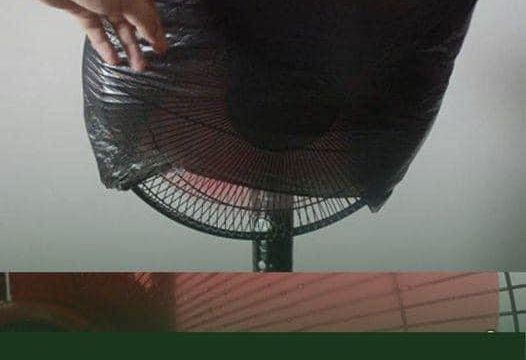When it comes to puzzles and brain teasers, there’s nothing quite as satisfying as solving a “spot the difference” style challenge. Today, we’re offering you something similar—a sequence of numbers from 1 to 100 arranged in neat rows. But there’s a twist: one number is missing. The big question is, can you find which one?

The Challenge
At first glance, the number sequence looks perfectly ordinary. It starts at 1 and goes all the way up to 100. Everything appears to be in order, but if you let your eyes scan through the numbers carefully, you’ll notice something is off. One number has been skipped, and it’s your job to figure out which one is missing.
The key to finding the missing number is careful observation. This isn’t just a test of how quickly you can look through a list of numbers—it’s also about how well you can spot subtle inconsistencies in an otherwise well-organized pattern. It challenges you to focus deeply on details that might otherwise go unnoticed, putting both your patience and your problem-solving skills to the test.
Tips for Solving the Puzzle
If you’re having trouble finding the missing number, don’t worry—you’re not alone. Puzzles like these can be deceivingly tricky, and it’s easy to miss something that’s right in front of you. Here are some quick strategies to help you zero in on the missing number:
- Focus on Groups of Numbers: The numbers are arranged in rows of nine, so one effective strategy is to examine each row individually. Breaking the puzzle into smaller segments makes it easier to identify any gaps or inconsistencies.
- Compare Neighboring Numbers: Numbers should follow a natural, predictable order. If you notice an unexpected gap between two numbers, that’s a good clue that something is missing nearby. Carefully comparing each number to its neighbors can help you identify where the sequence has been interrupted.
- Take Your Time: Patience is essential for puzzles like this one. If you rush through the list, it’s easy to overlook the detail that sets the missing number apart. Take your time, move slowly through each row, and make sure you’re giving each number the attention it deserves.
The Answer Revealed
Spoiler alert: if you’re still searching for the missing number, now’s your chance to pause and give it another go before reading ahead.
@lorplayz4 #fyp#fypシ #fypage #viral #views #follow #fypシ゚viral #dance #kid #hold #phone #number? ♬ original sound – lor playz
Still can’t find it? No worries—this one can be tricky! The missing number is 66. Right between 65 and 67, this number is conspicuously absent from the list. It’s a small detail, but one that can be surprisingly difficult to spot when your brain is accustomed to seeing numbers in perfect sequential order. The challenge of spotting this missing number is a great test of your ability to detect inconsistencies and think outside the box.
What This Puzzle Says About You
Puzzles like this one are more than just a fun exercise—they provide valuable insights into how you think and process information. Spotting the missing number quickly suggests that you have a natural talent for recognizing patterns and an eye for detail. It means you’re skilled at noticing when something doesn’t fit, and you have the focus to examine a seemingly straightforward problem until you find the answer.
If you were able to find the missing number without much trouble, it shows that you’re good at maintaining focus and paying attention to even the smallest details. This is an important skill that can be applied to many aspects of life, from solving problems at work to spotting errors in everyday situations.
On the other hand, if it took you a bit longer to find the missing number, or if you had to use the strategies mentioned above, that’s perfectly fine too. Our brains are often wired to make assumptions, especially when we’re presented with something we expect to be complete and orderly. When we see a list of numbers from 1 to 100, we naturally assume everything is there. It takes conscious effort to challenge that assumption and really examine what’s in front of us. That’s what makes puzzles like this such valuable exercises—they encourage us to question our assumptions and look at things more critically.
Why Puzzles Like This Are Great for Your Brain
Engaging in puzzles like this one is more than just an entertaining pastime—it’s also great exercise for your brain. Brain teasers and puzzles help improve cognitive skills such as problem-solving, pattern recognition, and attention to detail. By working on puzzles regularly, you can train your brain to process information more efficiently, notice inconsistencies more readily, and think creatively.
These skills aren’t just useful for solving puzzles; they’re also valuable in everyday life. Whether you’re troubleshooting a problem at work, managing multiple tasks, or simply trying to stay mentally sharp, the skills you develop through puzzles can be incredibly beneficial.
Working on puzzles also helps improve your memory and focus. By forcing you to pay close attention to details and remember the sequence of numbers, you’re effectively giving your memory a workout. This can lead to better concentration, enhanced problem-solving abilities, and even increased creativity.
Did You Find the Missing Number?
So, how did you do? Did you spot the missing number right away, or did it take a bit of effort? Whether you found it immediately or needed some extra time to work through the sequence, the important thing is that you gave your brain a good workout. The process of looking closely, challenging yourself, and eventually finding the answer is what makes puzzles like these so rewarding.
We’d love to hear about your experience! Were you able to find the missing 66 quickly, or did you need a few hints along the way? Let us know in the comments below. And if you enjoyed this puzzle, share it with friends and family to see how they fare—sometimes the simplest puzzles are the ones that end up being the most challenging.
Puzzles like this one remind us that even the most straightforward sequences can hold unexpected surprises. It’s a great reminder that sometimes the answer is right there in front of us, but we need to take a step back, look a little closer, and question our initial assumptions. The next time you face a challenge—whether it’s a puzzle or a real-world problem—remember to slow down, stay patient, and look at things from a different angle. You might just find the answer you’ve been searching for all along.





